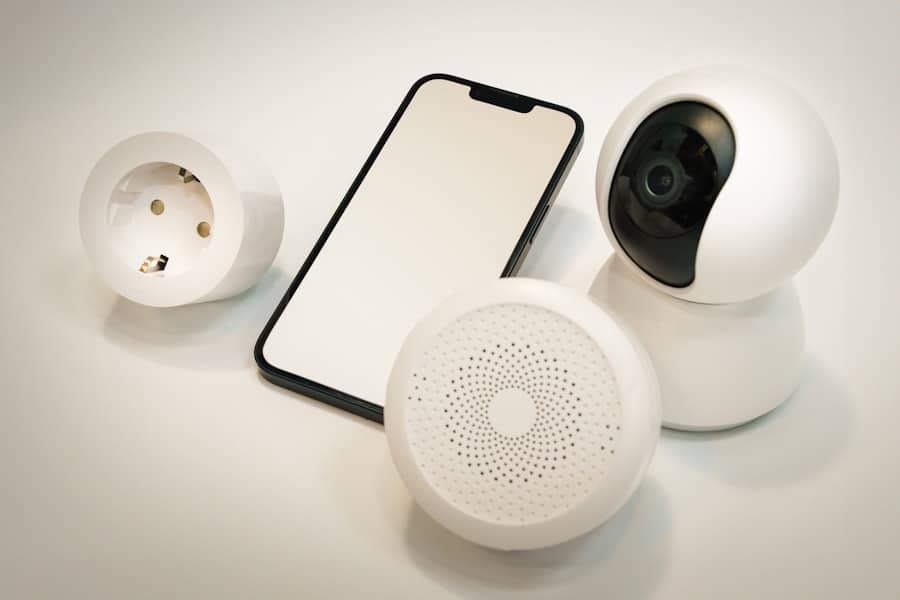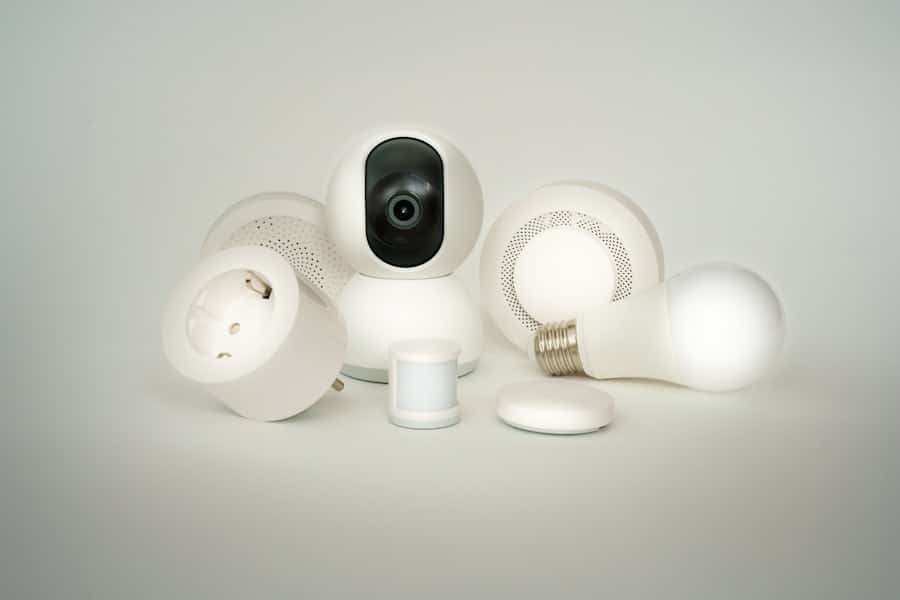Smart home hubs serve as the central nervous system of modern smart homes, orchestrating the communication between various connected devices. These hubs enable users to control everything from lighting and heating to security systems and entertainment devices through a single interface. The rise of smart home technology has transformed the way we interact with our living spaces, making them more efficient, convenient, and responsive to our needs.
As the Internet of Things (IoT) continues to expand, smart home hubs have become increasingly sophisticated, integrating a wide array of devices from different manufacturers and ecosystems. The concept of a smart home hub is rooted in the desire for seamless connectivity and automation. Traditionally, smart devices operated in silos, requiring users to manage each device through its own app or interface.
This fragmentation often led to frustration and inefficiency. Smart home hubs emerged as a solution to this problem, providing a unified platform that allows users to control multiple devices from various brands with ease. By consolidating control into a single application or voice command, these hubs enhance user experience and promote greater adoption of smart technologies in everyday life.
Key Takeaways
- Smart home hubs are central devices that connect and control various smart home devices and systems.
- Current challenges in device integration include compatibility issues, limited interoperability, and the need for multiple apps and interfaces.
- Advancements in smart home hub technology include improved connectivity, voice control, and the integration of multiple protocols.
- Artificial intelligence plays a crucial role in device integration by enabling predictive and personalized automation.
- Security and privacy concerns with smart home hubs include data breaches, unauthorized access, and potential misuse of personal information.
Current Challenges in Device Integration
Despite the advancements in smart home technology, significant challenges remain in the realm of device integration. One of the primary issues is the lack of standardization across different manufacturers and platforms. Each brand often employs its own communication protocols and ecosystems, which can lead to compatibility issues.
For instance, a user may find that their Philips Hue lights do not seamlessly integrate with their Google Nest thermostat, resulting in a disjointed experience. This fragmentation can deter consumers from fully embracing smart home technology, as they may be hesitant to invest in devices that do not work well together. Another challenge lies in the complexity of setup and configuration.
Many users find the initial installation process daunting, particularly when dealing with multiple devices from different manufacturers. The need for technical knowledge can create barriers for less tech-savvy individuals, limiting the accessibility of smart home technology. Furthermore, ongoing updates and changes in software can lead to unexpected disruptions in device functionality, causing frustration for users who expect their systems to work flawlessly.
These challenges highlight the need for more intuitive solutions that simplify the integration process and enhance user experience.
Advancements in Smart Home Hub Technology
In recent years, significant advancements have been made in smart home hub technology, addressing some of the challenges associated with device integration. One notable development is the emergence of universal protocols such as Matter, which aims to create a unified standard for smart home devices. By enabling interoperability among various brands and ecosystems, Matter has the potential to streamline device integration and enhance user experience.
This protocol allows devices from different manufacturers to communicate effectively, reducing compatibility issues and fostering a more cohesive smart home environment. Additionally, advancements in cloud computing and edge processing have improved the performance and capabilities of smart home hubs. Modern hubs can now process data locally, reducing latency and enhancing responsiveness.
This shift allows for real-time automation and control, enabling users to execute commands without delay. Furthermore, cloud-based services provide users with remote access to their smart home systems, allowing them to monitor and control devices from anywhere in the world. These technological advancements not only improve functionality but also contribute to a more seamless integration of devices within the smart home ecosystem.
The Role of Artificial Intelligence in Device Integration
Artificial intelligence (AI) plays a pivotal role in enhancing the functionality of smart home hubs and improving device integration. AI algorithms can analyze user behavior and preferences, allowing smart home systems to learn and adapt over time. For example, an AI-powered hub may recognize that a user typically adjusts their thermostat at a specific time each day and automatically make that adjustment without requiring explicit commands.
This level of automation not only enhances convenience but also promotes energy efficiency by optimizing device usage based on user habits. Moreover, AI can facilitate more sophisticated interactions between devices within a smart home ecosystem. Through natural language processing (NLP), users can issue voice commands that are interpreted contextually by the hub.
This capability allows for more complex commands that involve multiple devices working in concert. For instance, a user could say, “Goodnight,” prompting the hub to turn off all lights, lock doors, and adjust the thermostat to a comfortable sleeping temperature. Such intelligent integrations create a more intuitive user experience and encourage greater engagement with smart home technology.
Security and Privacy Concerns with Smart Home Hubs
As smart home hubs become increasingly central to our daily lives, security and privacy concerns have emerged as critical issues. The interconnected nature of smart devices means that vulnerabilities in one device can potentially compromise the entire network. Cybersecurity threats such as hacking or unauthorized access pose significant risks to users’ personal data and privacy.
For instance, if a hacker gains access to a smart camera or door lock, they could exploit that access to invade a user’s privacy or even facilitate physical break-ins. To mitigate these risks, manufacturers are investing in robust security measures such as end-to-end encryption and regular software updates. However, many consumers remain unaware of the importance of securing their smart home systems.
The complexity of managing security settings across multiple devices can also deter users from taking necessary precautions. Educating consumers about best practices for securing their smart homes is essential for fostering trust in these technologies and ensuring that users feel confident in adopting smart home solutions.
The Impact of 5G on Smart Home Hubs
The rollout of 5G technology is poised to revolutionize the landscape of smart home hubs by providing faster and more reliable connectivity. With significantly lower latency and higher bandwidth compared to previous generations of mobile networks, 5G enables real-time communication between devices without lag or interruption. This enhanced connectivity is particularly beneficial for applications that require instantaneous responses, such as security systems or remote monitoring solutions.
Furthermore, 5G’s ability to support a larger number of connected devices simultaneously will facilitate the growth of smart homes with numerous IoT devices.
5G networks can accommodate this demand by providing seamless connections across various devices without compromising performance.
This advancement will not only enhance user experience but also pave the way for innovative applications that leverage the capabilities of 5G technology within smart homes.
Future Trends in Smart Home Hub Development
Looking ahead, several trends are likely to shape the future development of smart home hubs. One significant trend is the increasing emphasis on sustainability and energy efficiency. As consumers become more environmentally conscious, there will be a growing demand for smart home solutions that help reduce energy consumption and carbon footprints.
Smart home hubs will likely incorporate features that monitor energy usage across devices and provide insights into optimizing energy efficiency. Another trend is the integration of health and wellness features into smart home hubs. With an aging population and rising health awareness, there is potential for hubs to incorporate health monitoring capabilities such as tracking air quality or monitoring vital signs through connected health devices.
This integration could create a holistic approach to well-being within the home environment, allowing users to manage both their physical health and their living conditions seamlessly.
The Potential of Seamless Device Integration
The evolution of smart home hubs represents a significant leap forward in how we interact with our living spaces. As technology continues to advance, the potential for seamless device integration becomes increasingly attainable. By addressing current challenges such as compatibility issues and security concerns while leveraging advancements in AI and connectivity, future smart home hubs will offer unparalleled convenience and efficiency.
The journey toward fully integrated smart homes is ongoing, but with each technological breakthrough, we move closer to realizing a vision where our homes respond intuitively to our needs. As consumers embrace these innovations, they will not only enhance their quality of life but also contribute to a more sustainable future through intelligent resource management within their homes. The promise of seamless device integration holds immense potential for transforming our everyday experiences into something truly extraordinary.
In a recent article discussing the future of smart home hubs for seamless device integration, it is interesting to note the advancements in wearable technology. A review of the Huawei smartwatch highlights the potential for these devices to become integral components of a connected home ecosystem. For more information on the latest smartwatch trends, check out




